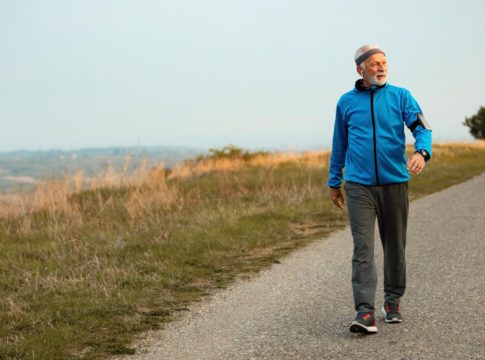The Truth About Walking: Essential Fitness Tips for Active Seniors
Staying Active Beyond 60
Walking is often hailed as a go-to exercise for seniors, admired for its low-impact benefits and accessibility. While racking up the classic goal of 10,000 steps each day can be a great starting point, it’s important to understand that relying solely on walking may not suffice for maintaining optimal health as we age. After the age of 60, staying active is crucial—not just for mobility, but for holistic well-being.
Why Walking Alone Isn’t Enough
As we grow older, agility can diminish, making it imperative to engage in a well-rounded fitness regimen. Focusing solely on walking leaves several important health aspects unaddressed. Here are some limitations of relying exclusively on walking:
- Limited Muscle Strength: Walking does not build or maintain the muscle strength crucial for daily activities and injury prevention.
- Balance Concerns: It doesn’t enhance balance, increasing the risk of falls, a major concern for seniors.
- Posture Issues: Years of sedentary behavior can lead to poor posture, which walking alone cannot correct.
Expert Insights
Fitness coach Mitch, known for his guidance on senior wellness, emphasizes the need for a more comprehensive approach. To truly thrive, seniors should diversify their workout routines by incorporating exercises that focus on muscle strength, balance, and posture.
Recommended Exercises for Seniors
In addition to walking, consider adding these beneficial exercises into your routine:
-
Seated Banded Rows
- Reps/Sets: 15 reps x 3 sets
- Benefits: Enhances posture and strengthens back muscles.
-
Sit-to-Stands
- Reps/Sets: 12 reps x 3 sets
- Benefits: Improves leg strength and mobility, vital for daily activities.
-
High Knees
- Duration: 30 seconds x 3 sets
- Benefits: Activates your core and enhances balance, preparing you for stability in everyday tasks.
- Single-Leg Stands
- Duration: 30 seconds per leg x 3 sets
- Benefits: This exercise trains your stability and is excellent for fall prevention.
Key Takeaways for Active Ageing
Staying fit after 60 requires more than just walking. By integrating these exercises into your fitness routine, you not only enhance your physical strength but also improve your balance and posture, paving the way for a healthier and more active lifestyle.
Final Thoughts
As you embark on this fitness journey, remember to listen to your body and consult a healthcare provider before starting new exercises, especially if you have pre-existing conditions. Embrace these tips, and let them motivate you to build a more comprehensive fitness routine—after all, age is just a number, and every step counts toward a vibrant, fulfilling life!

Covers wellness, nutrition, mental health, and daily life tips.
Bio: Talia brings a background in health journalism and holistic living to help readers live better, one tip at a time.

